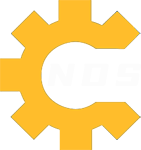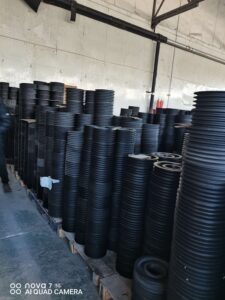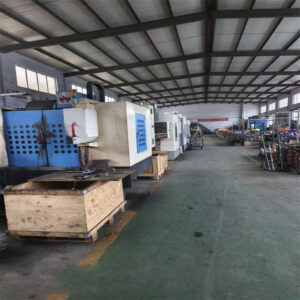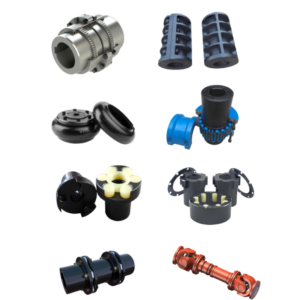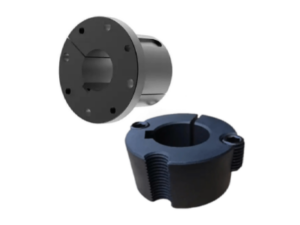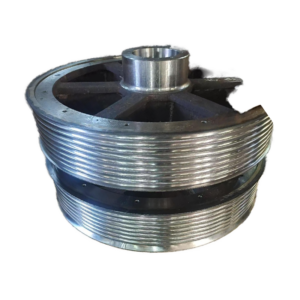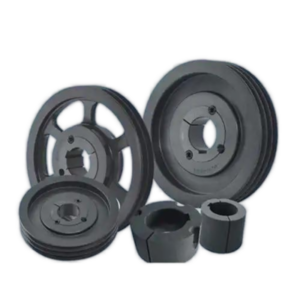Pulley coatings are primarily used to enhance wear resistance, prevent corrosion, reduce friction, and extend service life. Below are the common types of coatings and their comparative advantages and disadvantages.
1. Electroplated Coatings (e.g., Zinc Plating, Chrome Plating)
- Advantages:
- Zinc Plating: Low cost, good rust resistance, suitable for general environments.
- Chrome Plating: High hardness, excellent wear resistance, glossy appearance, and superior corrosion resistance.
- Disadvantages:
- Zinc plating may develop white rust in humid environments; chrome plating is more expensive and has strict environmental regulations.
- Applications:
- Zinc plating: Indoor or dry environments; Chrome plating: High-load or humid environments (e.g., agricultural machinery, automotive components).
2. Dacromet Coating (Zinc-Aluminum Flake Coating)
- Advantages:
- No hydrogen embrittlement risk, extremely high corrosion resistance (5-10 times better than zinc plating), and heat resistance (up to 300°C).
- Disadvantages:
- Relatively soft coating with moderate wear resistance; limited color options (silver-gray).
- Applications:
- Highly corrosive environments (e.g., marine, chemical equipment).
3. Phosphating Coating
- Advantages:
- Improves metal surface adhesion, reduces friction, low cost, and simple process.
- Disadvantages:
- Weak rust resistance, often requires additional lubrication.
- Applications:
- Low-speed, low-load pulleys, often used in combination with other coatings.
4. Anodizing (for Aluminum Pulleys)
- Advantages:
- Increases surface hardness of aluminum, excellent corrosion resistance, electrical insulation, and customizable colors.
- Disadvantages:
- Only applicable to aluminum alloys; thin coating with low impact resistance.
- Applications:
- Lightweight applications (e.g., automotive, aerospace aluminum components).
5. Teflon (PTFE) Coating
- Advantages:
- Extremely low friction coefficient (self-lubricating), chemical corrosion resistance, and anti-adhesion properties.
- Disadvantages:
- Poor wear resistance, high cost, and requires periodic maintenance.
- Applications:
- Food processing and pharmaceutical industries (clean and anti-stick requirements).
6. Thermal Spray Coating (e.g., Tungsten Carbide, Ceramic)
- Advantages:
- Ultra-high wear resistance (especially tungsten carbide), heat resistance, and long service life.
- Disadvantages:
- Complex process, very high cost, and requires high-quality base materials.
- Applications:
- Extreme working conditions (e.g., mining machinery, heavy industrial equipment).
Coating Comparison Summary
| Coating Type | Wear Resistance | Corrosion Resistance | Cost | Suitable Materials | Typical Applications |
|---|---|---|---|---|---|
| Chrome Plating | ★★★★☆ | ★★★★☆ | Medium-High | Steel, Cast Iron | Automotive, High-Load Machinery |
| Dacromet | ★★☆☆☆ | ★★★★★ | Medium | Steel, Alloys | Marine, Chemical Equipment |
| Phosphating | ★★☆☆☆ | ★★☆☆☆ | Low | Steel, Cast Iron | Low-Speed Pulleys (with lube) |
| Anodizing | ★★★☆☆ | ★★★★☆ | Medium | Aluminum Alloys | Lightweight Components |
| Teflon (PTFE) | ★★☆☆☆ | ★★★★☆ | High | Various Materials | Food, Pharmaceutical Industries |
| Thermal Spray | ★★★★★ | ★★★★☆ | Very High | Steel, Specialty Alloys | Mining, Extreme Environments |
Selection Recommendations
- Cost-Effective: Zinc or phosphating (low-load environments).
- Corrosion Resistance Priority: Dacromet or chrome plating.
- Wear Resistance Needed: Thermal spray (e.g., tungsten carbide).
- Lightweight Requirements: Anodized aluminum.
- Special Needs: Teflon (anti-stick, clean environments).
